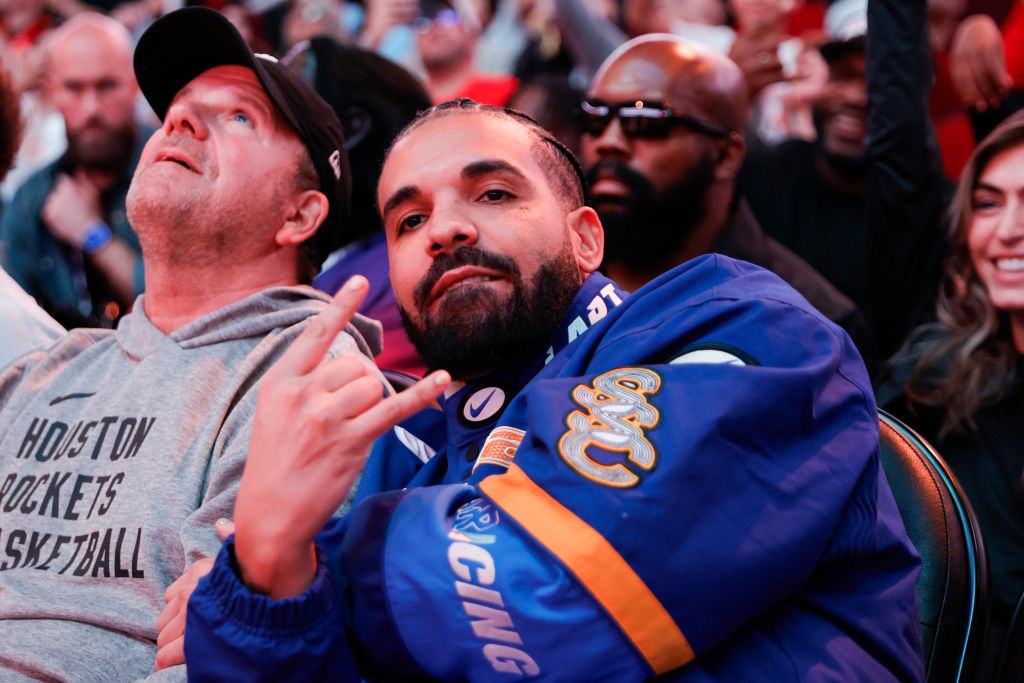Tarik Carroll is leading the fight for men’s body positivity one photoshoot at a time. As founder of the EveryMAN Project, the lensman creates stunning visuals that shed light on the effect of toxic masculinity on body image, while engaging in conversations on gender identity, sexuality and trans inclusivity among men of color.
I came up with the idea of recreating iconic fashion moments, and reimagining them with a diverse vision.
“Growing up as a black kid, probably the tallest and chubbiest kid in the class, I had the highest voice. I have always been different,” Carroll says. “Looking at fashion ads when I was a child and loving what I was seeing but not seeing myself represented, I came up with the idea of recreating iconic fashion moments, and reimagining them with a diverse vision.”
And the message seems to be resonating. Since launching the initiative in 2017, The EveryMAN Project has collaborated with global fashion brands ASOS and AllSaints. Carroll was named a “Body Positive Warrior” by Healthline and a “Fashion Rule Breaker” by Ashton Kutcher’s media company, A Plus. Here, the Brooklyn native talks mission-minded photography, breaking barriers and the importance of representation.
How did your personal experiences help shape your vision for the EveryMAN Project?
Growing up as an eccentric Black male in the ’90s, not only did I feel different, growing up I never saw anyone in media, tv, film or music that looked like me, and if I did, they were portrayed as a caricature or a joke. Into my adulthood, my insecurities began to manifest and through dating and life experiences I started to share my stories with other men. At that point, I saw that we all have something in common. We all have insecurities and body image issues, we all have emotions but we don’t process or express them in a healthy way. I created the EveryMan Project so that we can ALL have this much-needed conversation together using photography, fashion and art as my mediums of expression.
Growing up as an eccentric Black male in the ’90s and probably the chubbiest & tallest kid in the class I always felt different.
How important is it to stress body positivity among men of color?
I can speak for myself. As a Black man growing up with a father and mother who lived through the Civil Rights era, [I was taught] to be strong, stoic and fearless in order to survive. [Back in the day] there wasn’t time for men of color to express emotions or feelings of inadequacy because that was seen as weakness. Masculinity meant being tough. A lot of those same ideologies and practices were programmed into us as Black men by our fathers, beginning a cycle of toxic masculinity that still imprisons our minds today. Body positivity, as well as challenging ideas of masculinity, are important to stress because the cycle needs to end.
How has toxic masculinity affected perceptions of body image among men of color?
Toxic masculinity is very prevalent in communities of color as a result of how some of our fathers raised us, in addition to generational trauma and shame. We as men of color carry that shame on our backs, creating a cycle of pain. We don’t address this pain; instead we talk about ourselves and each other negatively. We have a very narrow and dated perception of what masculinity is— instead we place ourselves in these boxes built by social constructs of what it means to be a man. We follow these ideologies so much that we truly don’t express our true authentic selves and truly embrace the entire spectrum of masculinity.
We all have insecurities and body image issues, but we don’t process or express them in a healthy way.
What drives the creative concept for each shoot?
I have been inspired by different things for each shoot, but the core intent has always been to create stunning campaign quality work of male bodies that we typically don’t see represented or celebrated in media. At our castings we hold interviews asking key questions related to body images issues and dealing with toxic masculinity. There’s also a photography portion that has been added to our most recent casting, which showcases subjects’ personal style.
Society has taught most men of color that we are not enough, that we are not beautiful.
Your images speak to male sexuality in addition to body image. How do the two connect in your vision for The EveryMAN project?
From my own experiences growing up as a Black queer male in America, if you’re not white, heterosexual or male you are seen as OTHER. Society has taught most men of color that we are not enough, that we are not beautiful. That our bodies are NOT important or worthy of love and acceptance. For that reason, sexuality and body image are key elements of this project, especially if we are redefining male aesthetics and showcasing the spectrum of masculinity.
What has been the most rewarding aspect of this endeavor?
The project has really been embraced, loved and appreciated which is one of the driving forces that keeps us going. With each shoot, I am filled with excitement in knowing that I am creating content that men are going to be able to see themselves in— content that is going to make men feel good about themselves.
The core intent [is] to create stunning campaign quality work of male bodies that we typically don’t see represented or celebrated in media.
How did your ASOS and AllSaints collaborations come about?
A brand representative from AllSaints reached out to us last July, and we were able to create an amazing work showcasing men of color in different sizes in an elevated way. The same with ASOS— we were able to build a relationship and create content while highlighting their amazing pieces.
What do you see in the future for The EveryMAN project?
Right now our focus is to finish the documentary and book that we are working on. Another goal is to grow EveryMan worldwide & to continue to create content that causes a shift in consciousness using fashion, art & photography as mediums of expression to inspire healing.
To learn more about The EveryMAN Project visit theeverymanproject.com, and follow the movement on Instagram.
















